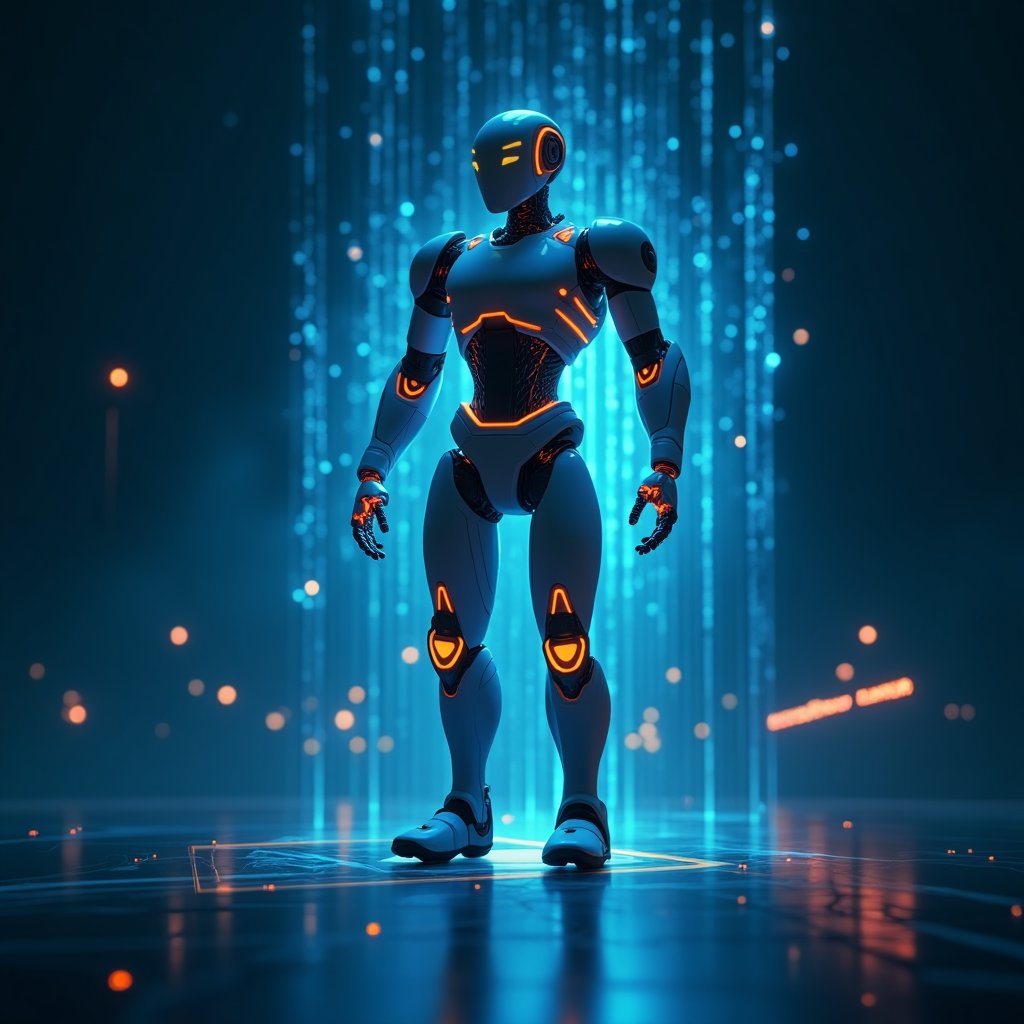Imagine a world where robots don’t just follow pre-programmed commands but think, adapt, and interact like humans. Sounds like science fiction, right? Well, thanks to Google’s latest breakthrough, this future is closer than you think. In a groundbreaking update, Google has integrated Gemini 2.0 into robotics, pushing the boundaries of what machines can do. This isn’t just an upgrade—it’s a leap into a new era of intelligent, interactive, and versatile robots. Let’s break it down and explore why this is a game-changer for robotics and AI.
What Is Gemini 2.0, and Why Should You Care?
Gemini 2.0 is Google’s most advanced Vision Language Action (VLA) model, designed to bring human-like reasoning and adaptability to robotics. Unlike previous robotic systems that require extensive training for specific tasks, Gemini 2.0 can generalize across a wide range of real-world scenarios. This means robots can now perform tasks they’ve never encountered before, all without needing a manual or a programmer to hold their hand. It’s like teaching a robot to think for itself—something that’s both exhilarating and slightly terrifying.
What sets Gemini 2.0 apart is its ability to understand the physical world in three dimensions. It can reason about spatial relationships, object affordances, and even trajectories intuitively. This isn’t just a fancy way of saying “robots can move things around.” It’s about creating machines that can interact with the world as naturally as humans do. Think of it as giving robots a brain that’s wired for real-world problem-solving.
Interactive, Dexterous, and General: The Trifecta of Robotic Evolution
Google’s Gemini robotics platform is built on three core principles: interactivity, dexterity, and generalization. Let’s unpack each of these to see how they’re transforming the field.
Interactivity: Responding in Real Time
One of the most impressive features of Gemini robotics is its ability to respond to live commands and adapt to rapidly changing environments. In a demo, a robot is asked to move bananas into a clear container. But here’s the kicker: as the human moves the bananas around, the robot recalculates its actions on the fly. This isn’t just a pre-programmed sequence—it’s real-time reasoning. The robot’s low latency ensures it can keep up with dynamic situations, making it as interactive as a human assistant.
This level of interactivity is crucial for real-world applications. Imagine a robot navigating a busy kitchen, dodging pets, kids, and flying utensils. With Gemini 2.0, it’s not just possible—it’s happening.
Dexterity: Mastering Complex Tasks
High-dexterity tasks have always been a challenge for robots. Things like folding origami or placing delicate objects require precision and finesse that traditional robotic systems struggle with. But Gemini 2.0 changes the game. In the demo, a robot folds an origami fox with the skill of a seasoned artist. Why? Because Gemini 2.0 understands spatial relationships and detailed aspects of objects in the environment.
This isn’t just about showing off—it’s about practicality. If robots can handle intricate tasks, they can be deployed in industries like manufacturing, healthcare, and even creative arts. The possibilities are endless.
Generalization: Learning on the Fly
The real magic of Gemini 2.0 lies in its ability to generalize across tasks. Unlike traditional robots that need extensive training for every new job, Gemini-powered robots can tackle unfamiliar tasks with minimal guidance. For example, in the demo, a robot is asked to flip a red die to match a number on a green die. The robot isn’t programmed to do this—it figures it out on the spot. This is what Google calls “zero-shot” or “few-shot” learning.
This ability to generalize is a game-changer. It means robots can adapt to new environments and tasks without constant reprogramming. It’s like hiring an employee who can learn new skills on the job—except this employee doesn’t take coffee breaks.
From Simulated to Real: Breaking the Training Barrier
One of the biggest criticisms of AI and robotics is that they can’t generalize outside their training data. But Gemini 2.0 is proving those critics wrong. With its advanced understanding of real-world concepts, robots can now perform tasks in physical environments without needing simulations that mirror reality. This is a massive leap forward because it reduces the time and data required to train robots.
For example, in the demo, a robot successfully slam-dunks a basketball—a task it’s never been trained to do. How? By leveraging Gemini 2.0’s understanding of concepts like basketball and slam dunks. This is mind-blowing because it shows that robots can now reason and make decisions based on abstract ideas, just like humans.
Real-Time Adaptation: The Future of Autonomous Robotics
The ability to adapt to rapidly changing environments is another standout feature of Gemini robotics. In the demo, the robot adjusts its actions as objects are moved around in real time. This level of autonomy is crucial for real-world applications, where unpredictability is the only constant.
Think about crossing a busy street. Cars, pedestrians, and traffic lights are constantly changing, and you need to be aware of your surroundings to navigate safely. Gemini-powered robots can do the same thing. Whether it’s a pet running across the floor or someone rearranging furniture, the robot can adapt on the fly.
Fine Motor Skills: Precision Meets Versatility
Fine motor skills are essential for robotics, and Gemini 2.0 delivers in spades. In the demo, the robot performs complex tasks like folding paper, placing glasses into holders, and arranging game pieces with remarkable precision. This is a big deal because it shows that even with basic hardware, robots can accomplish a wide range of tasks.
Imagine the possibilities with more advanced hardware. Robots could perform tasks that are beyond human capability, opening up new frontiers in industries like surgery, microelectronics, and more.
Adaptability Across Platforms: One Model to Rule Them All
One of the most exciting aspects of Gemini 2.0 is its adaptability across different robotic platforms. Whether it’s a humanoid robot with five-fingered hands or an industrial robot arm, Gemini can be deployed with minimal data. This is a huge advantage because it means the same model can be used across various applications, saving time and resources.
For example, Google demonstrated how Gemini could be adapted from a basic robotic arm to a humanoid robot, allowing it to execute intricate manipulation tasks quickly. This level of flexibility is a game-changer for the robotics industry.
Gemini Robotics ER: The Next Frontier
Google has also introduced Gemini Robotics ER, a Vision Language Model with enhanced embodied reasoning. This model allows robots to deeply understand the physical environment, including spatial concepts and object affordances. Traditional robots perform isolated tasks in pre-programmed settings, but Gemini Robotics ER enables them to reason intuitively, much like humans.
This is a significant advancement because it bridges the gap between simulation and reality. Robots can now perform tasks in complex, unstructured environments with minimal guidance.
The Big Picture: What This Means for the Future
Google’s Gemini 2.0 is more than just a technological upgrade—it’s a glimpse into the future of robotics. By combining interactivity, dexterity, and generalization, Gemini is paving the way for intelligent machines that can work alongside humans seamlessly.
This isn’t just about making our lives easier—it’s about redefining what’s possible. From healthcare to manufacturing, entertainment to education, the applications are limitless. And as these technologies continue to evolve, we’re not just witnessing the rise of smarter robots—we’re witnessing the dawn of a new era in human-machine collaboration.
So, what do you think about Gemini 2.0? Is this the breakthrough we’ve been waiting for, or are we stepping into uncharted territory? Let’s spark the conversation. Join the iNthacity community, become a permanent resident of the "Shining City on the Web," and share your thoughts in the comments. The future is here—let’s shape it together.
Wait! There's more...check out our gripping short story that continues the journey: The title of the short story is "Integration is Inevitable."
Disclaimer: This article may contain affiliate links. If you click on these links and make a purchase, we may receive a commission at no additional cost to you. Our recommendations and reviews are always independent and objective, aiming to provide you with the best information and resources.
Get Exclusive Stories, Photos, Art & Offers - Subscribe Today!


























Post Comment
You must be logged in to post a comment.